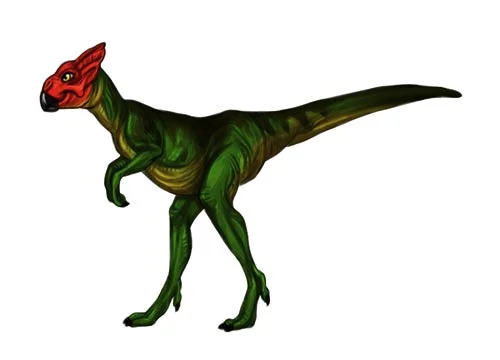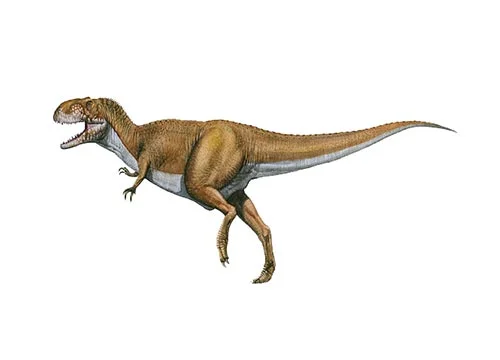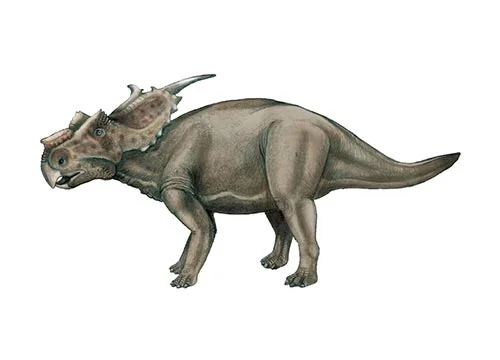Microceratus (Small horned)

Mi-krow-seh-rah-tus
O. Mateus - 2008
Herbivore
Estimated up to 2 meters long
Ceratopsian
M. gobiensis (type)
Mongolia
Late Cretaceous, 80 million years ago
Microceratus Facts
Microceratus, meaning “small horned,” is a genus of small ceratopsian dinosaur that lived during the Late Cretaceous period, around 80 million years ago. It was first discovered in the Gobi Desert of Mongolia by the Central Asiatic Expeditions in the 1920s and was later described by the famous paleontologist Roy Chapman Andrews in 1933.
Microceratus was a small dinosaur, measuring only about 2 meters (6.5 feet) in length and weighing around 45-90 kilograms (100-200 pounds). It had a characteristic pair of small horns on its forehead, and its frill was relatively short and shallow compared to other ceratopsians like Triceratops.
Microceratus likely fed on low-lying vegetation with its sharp beak, and it may have used its horns and frill for display or as a form of defense against predators. Despite its small size, it was still a formidable prey item for small predators like Velociraptor.
While Microceratus is not as well-known as some of the more famous dinosaurs like T. rex or Stegosaurus, it is still an important part of our understanding of the diversity of life during the Late Cretaceous. Its small size and unique features make it a fascinating subject of study for paleontologists and dinosaur enthusiasts alike.



